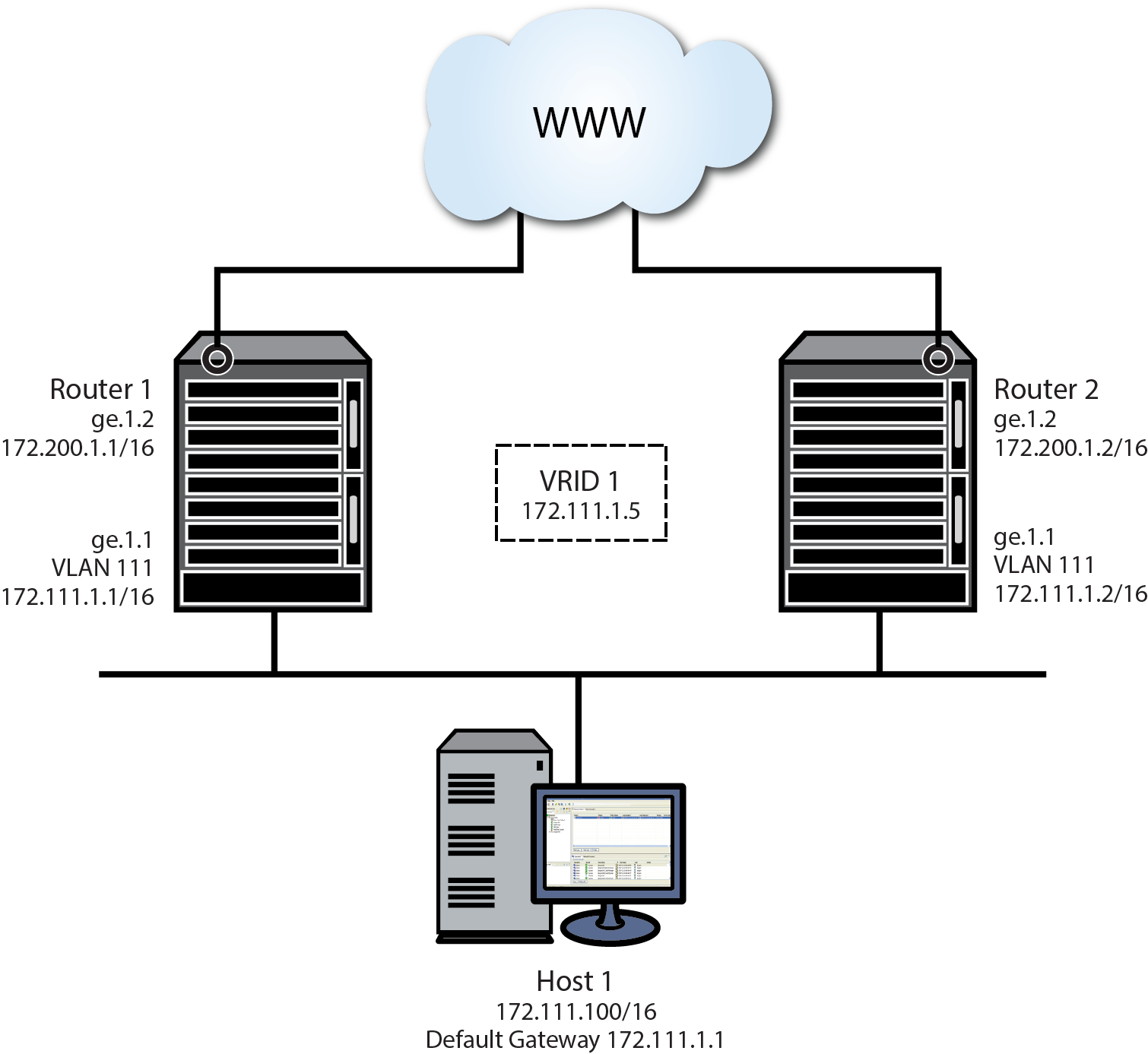A critical-IP address defines an interface that will prevent the master router from functioning properly if the interface were to fail. A critical-IP address is typically an internet facing interface, but can be any IP address that does not include the VRRP configured interface between hosts and a VRRP master or backup first-hop router. An IP address of an interface connecting a master router to a router configured for internet access would be considered a critical-IP address for VRRP routing. Critical-IP addresses can be both local or remote.
Use the vrrp critical-ip command in interface configuration command mode to configure an internet facing IP address as a VRRP critical-IP address, specifying the affected IP address, the associated VRID, and an optional decrement priority setting. A default ICMP probe is auto-configured to monitor remote critical-IP addresses. An administratively configured ICMP probe can be applied to override the default ICMP probe. See Preset Default ICMP Probes for default ICMP probe details. Probes are configured in the tracked object manager. See Tracked Object Manager Configuration for details.
If the critical-IP interface goes down with priority configured and enabled, the operational priority for the VRID to which this critical-IP address is associated is decremented by the value of the priority specified in this command. If the operational priority of the VRID falls below that of a backup router, the backup router becomes the master and the VRID assumes the priority value of the new master. Should the critical-IP interface come back up, the priority of the router associated with this critical-IP address is increased by the priority set for the critical-IP address. If preempt is enabled on the critical-IP address associated router, the router will once again become master and the VRID assumes the priority of the new master.
The default priority setting is enabled with a value of 10. Setting the critical-IP address priority to enabled signals that the critical-IP will affect the operational priority for the VRID. Setting the priority to disabled signals the critical-IP interface state will have no effect on the operational priority for the VRID.
Up to 2048 critical-IP addresses can be configured on a device. Up to 10 per VRID.
If the critical-IP address is configured on a router where the VRID IP address is owned by that router, the critical-IP configuration is ignored. When a router owns the IP address configured for the VRID, that router is automatically made the master with a hard-coded priority of 255. Only the failure of the interface with the VRID IP address can cause the router to move to backup status.
Critical-IP Address Configuration presents a typical critical-IP address configuration.

The VRRP configuration is entered as follows:
In this example, should the critical-IP address 172.200.1.1/16 go down, the VRID 1 priority would decrement by 10, the value of the down critical-IP address, to 95. Router 2, with a priority set to 100 would take over as master. Should the critical-IP address 172.200.1.1/16 come back up, the priority for router 1 would increment by 10 from 95 to 105. Router 1 would now have a priority higher than the current priority 100 for VRID 1 and would become master once again.

 Print
this page
Print
this page Email this topic
Email this topic Feedback
Feedback